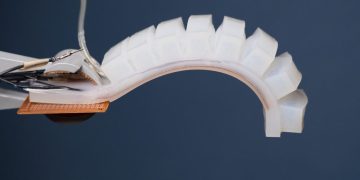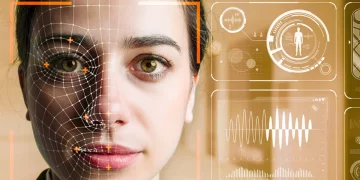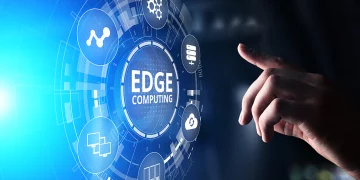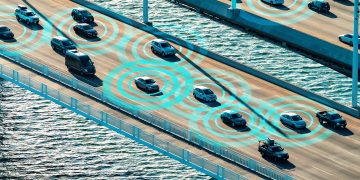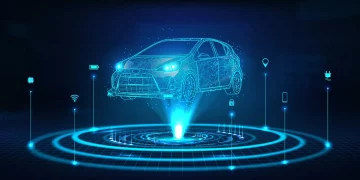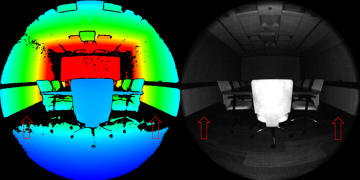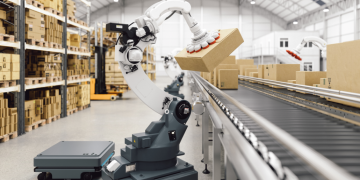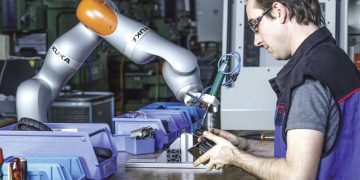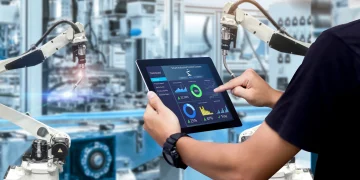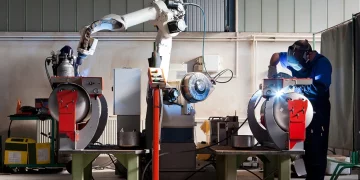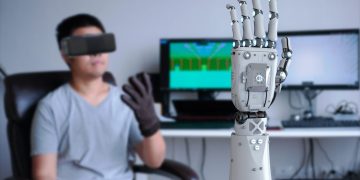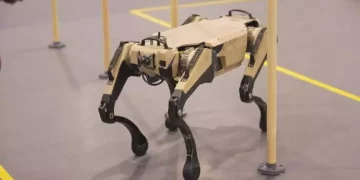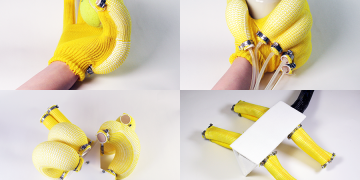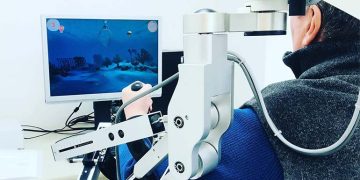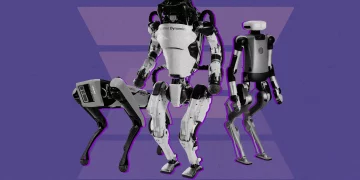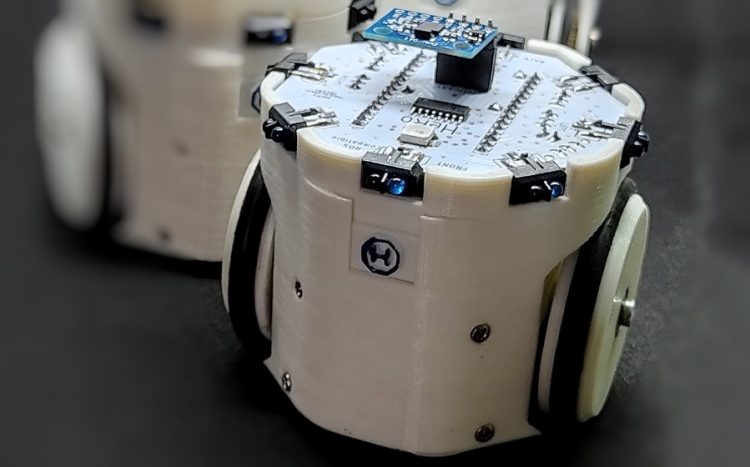Introduction
Bionic robots, inspired by nature’s most fascinating creatures, are increasingly becoming an essential part of modern robotics. One of the most intriguing and groundbreaking aspects of these robots is their ability to mimic collective behaviors exhibited by groups of animals, such as swarming, flocking, and herding. These behaviors are often achieved through distributed control systems that allow multiple robots to coordinate and work collaboratively to complete tasks efficiently and autonomously.
The idea of utilizing swarm intelligence—the phenomenon where simple agents working together can solve complex problems—has opened up new possibilities in a variety of fields, from industrial automation to disaster response. By mimicking the collective behaviors seen in species like ants, bees, or birds, bionic robots can work together in ways that far exceed the capabilities of individual robots. These swarm-like systems exhibit self-organization, adaptation, and robustness, making them well-suited for dynamic and unpredictable environments.
In this article, we will explore the application of swarm intelligence in bionic robots, how distributed control systems enable coordinated action, and the benefits of collective behavior in real-world robotics. We will also delve into the challenges, potential applications, and ethical considerations associated with this evolving technology.
1. Understanding Collective Behavior in Nature
a. The Concept of Collective Behavior
In nature, collective behavior refers to the actions performed by a group of organisms that are individually simple but become highly efficient when coordinated. This behavior often results from the interaction between individuals that follow relatively simple rules, but when aggregated, can solve complex problems, such as food collection, defense mechanisms, or navigation.
For example, ant colonies exhibit highly coordinated behaviors when foraging for food. Each ant follows a set of basic rules—such as following chemical trails (pheromones)—but collectively, they can efficiently find and transport food back to the colony. Similarly, flocks of birds navigate and maneuver in unison, following simple rules based on proximity, speed, and direction of flight. These behaviors, though simple at the individual level, create emergent properties that make the entire group appear as if it is acting with a single purpose.
This concept of swarm intelligence has inspired the development of bionic robots that mimic the behavior of these creatures. Through distributed control systems, bionic robots can collaborate and work together to complete tasks without a central authority or individual supervision.
b. Key Features of Collective Behavior in Nature
Some of the primary characteristics of collective behavior in nature include:
- Decentralization: No central controller directs the group; each individual acts independently based on local information.
- Adaptability: The group can adapt to environmental changes, such as obstacles or the introduction of new tasks.
- Scalability: The group can increase or decrease in size without affecting its ability to function.
- Robustness: The system is resilient to failures; if one or more agents fail, the system as a whole can continue to operate effectively.
These features are critical for robots to mimic in order to achieve optimal results in swarm robotics and distributed control systems.
2. Swarm Intelligence and Distributed Control Systems in Robotics
a. Swarm Robotics: A New Paradigm
Swarm robotics is a subfield of robotics inspired by the collective behavior of social animals. In this approach, multiple robots (often simple and inexpensive) are deployed in a given environment and are tasked with completing a job through collaboration. These robots operate autonomously, communicating with each other and the environment to achieve a common goal.
In swarm robotics, the focus is on creating algorithms and control systems that enable robots to:
- Communicate with one another to share information, such as task status or environmental conditions.
- Coordinate their actions based on local information, avoiding the need for a central controller.
- Self-organize to form structures, patterns, or perform tasks like search, transport, or exploration.
The emergent behavior of the swarm allows the robots to perform complex tasks without being explicitly programmed for every step. Instead, they rely on local interactions and feedback loops to create global behaviors that are beneficial for the task at hand.
b. Distributed Control Systems: Enabling Coordination without Centralization
At the heart of swarm robotics lies the concept of distributed control systems. In traditional robot systems, a central computer or operator controls the actions of each robot, giving precise commands for every task. However, in a distributed system, each robot operates autonomously, following a set of local rules that allow for coordination and collaboration.
In a distributed control system, robots do not require a central authority to guide their actions. Instead, they rely on simple communication protocols and local interactions to make decisions. For example:
- Proximity-based interaction: Robots may decide to move towards or away from each other based on distance, helping them avoid collisions and form cohesive groups.
- Task allocation: Robots can divide work amongst themselves based on local tasks and resource availability, enabling the group to adapt as conditions change.
- Self-healing: If one robot in the group fails, the system can adapt by redistributing the tasks among the remaining robots, maintaining the swarm’s overall functionality.
Distributed control systems are essential for enabling robustness, flexibility, and scalability in swarm robotics. These features are especially important in environments where conditions are constantly changing or where large numbers of robots need to work in parallel.
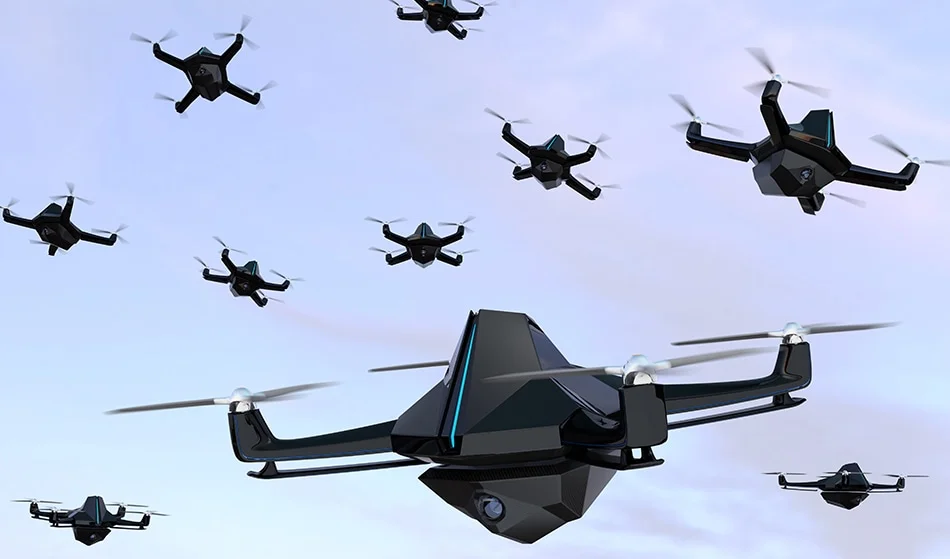
3. Applications of Bionic Robots Using Collective Behavior
a. Industrial Automation and Logistics
In the manufacturing and logistics sectors, swarm robotics has the potential to revolutionize the way tasks are carried out. Bionic robots equipped with distributed control systems can perform complex tasks such as inventory management, assembly, and transportation.
For example, in a warehouse, multiple bionic robots can be deployed to locate and retrieve items based on orders. These robots can communicate with each other to ensure they are not duplicating tasks, avoid collisions, and optimize paths through the warehouse. The robots’ ability to self-organize and adapt to changes in the warehouse layout or task priorities makes them ideal for dynamic environments.
In industrial automation, swarm robots can assist in quality control, assembly, and inspections, working collaboratively to complete tasks faster and with greater precision.
b. Search-and-Rescue Missions
In disaster recovery scenarios, swarm robotics can play a critical role. Bionic robots, mimicking the collective behavior of animals, can work together to locate survivors, clear debris, and navigate hazardous environments where human presence is limited or dangerous.
These robots can be equipped with sensors to detect signs of life or hazards and can communicate to decide on the most efficient routes or actions. A swarm of robots can adapt to the situation by reorganizing themselves to cover more area or focus on specific tasks, such as searching for trapped individuals or transporting equipment.
c. Environmental Monitoring
Bionic robots can also be used for environmental monitoring in areas such as agriculture, forestry, and pollution control. Using swarm intelligence, robots can work in tandem to monitor environmental conditions, collect data, and even carry out tasks like planting trees or cleaning polluted water bodies.
For instance, a swarm of robots could be deployed to monitor the health of crops in a large farm. They can collaborate to identify diseases, pests, or environmental changes, and take corrective actions autonomously. By acting as a cohesive unit, these robots can efficiently cover large areas, while their collective intelligence ensures that tasks are completed optimally.
d. Autonomous Vehicles and Drones
Swarm robotics is being explored in the realm of autonomous vehicles and drones. By mimicking the flocking behavior of birds or the navigation patterns of fish, bionic robots in the form of drones or self-driving cars can work together to navigate complex environments, avoid obstacles, and deliver goods.
For example, a fleet of autonomous delivery drones can communicate with one another to optimize flight paths, avoid traffic congestion, and deliver packages in an efficient, timely manner.
4. Challenges in Implementing Collective Behavior in Bionic Robots
a. Scalability
While swarm robotics has shown great potential in small-scale environments, scaling these systems to large numbers of robots is challenging. As the number of robots increases, the complexity of communication, coordination, and decision-making also grows. Ensuring that the robots can work together efficiently without creating congestion or communication overload is a key challenge for developers.
b. Robustness in Dynamic Environments
Bionic robots must be able to handle dynamic environments where conditions can change rapidly. For example, in disaster recovery or industrial settings, unexpected obstacles may arise. Developing algorithms that enable the swarm to adapt in real-time, without central coordination, is critical for ensuring the robustness and flexibility of the system.
c. Ethical and Security Concerns
The deployment of large numbers of autonomous robots raises ethical concerns, particularly regarding privacy, security, and job displacement. Ensuring that these systems operate transparently and safely, without causing harm to humans or the environment, will require careful consideration and regulation.
5. Conclusion
The use of bionic robots inspired by the collective behavior of animals is poised to revolutionize various industries. By leveraging swarm intelligence and distributed control systems, these robots can work collaboratively, adapt to changing environments, and perform complex tasks with efficiency and precision.
While there are challenges to overcome, such as scalability, robustness, and ethical considerations, the potential applications of swarm robotics in industrial automation, disaster recovery, environmental monitoring, and autonomous vehicles are immense. As technology advances, bionic robots that mimic nature’s collective intelligence will play an increasingly important role in shaping the future of robotics and automation.

